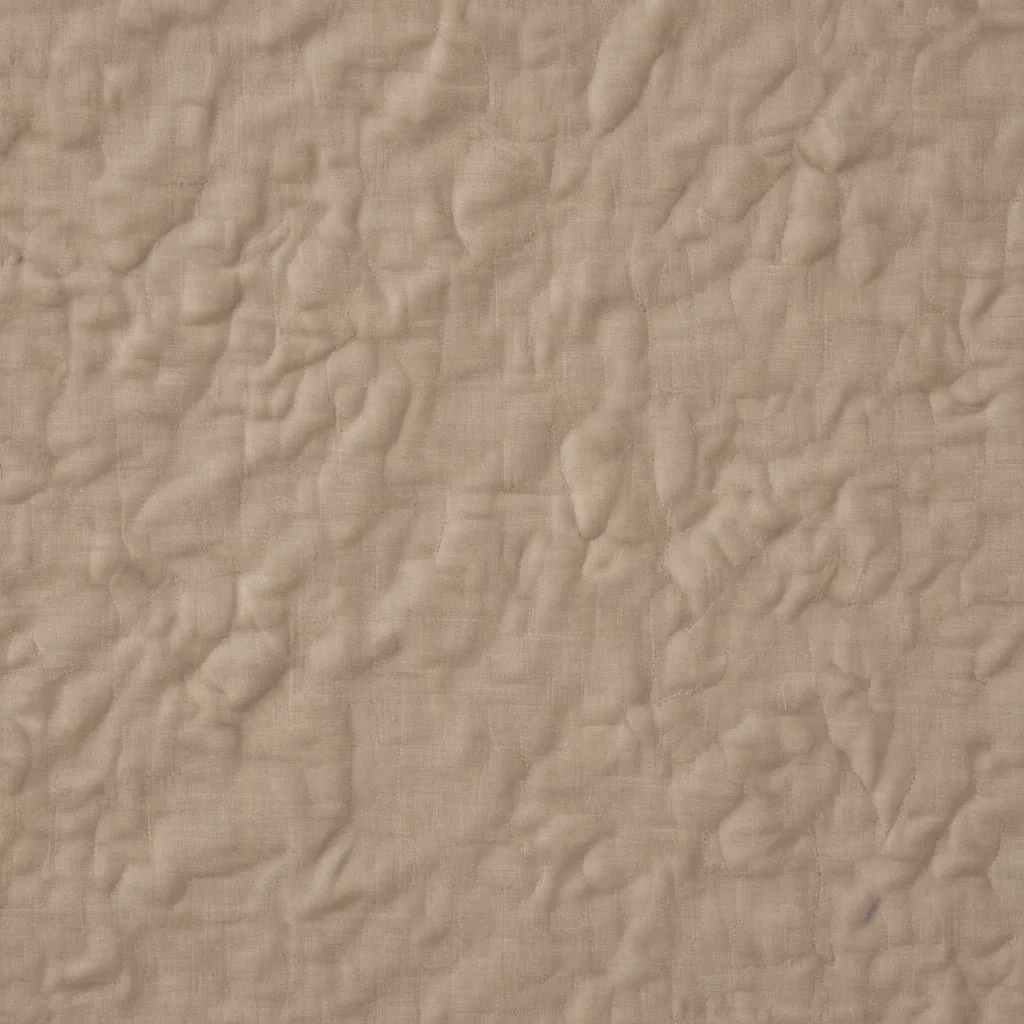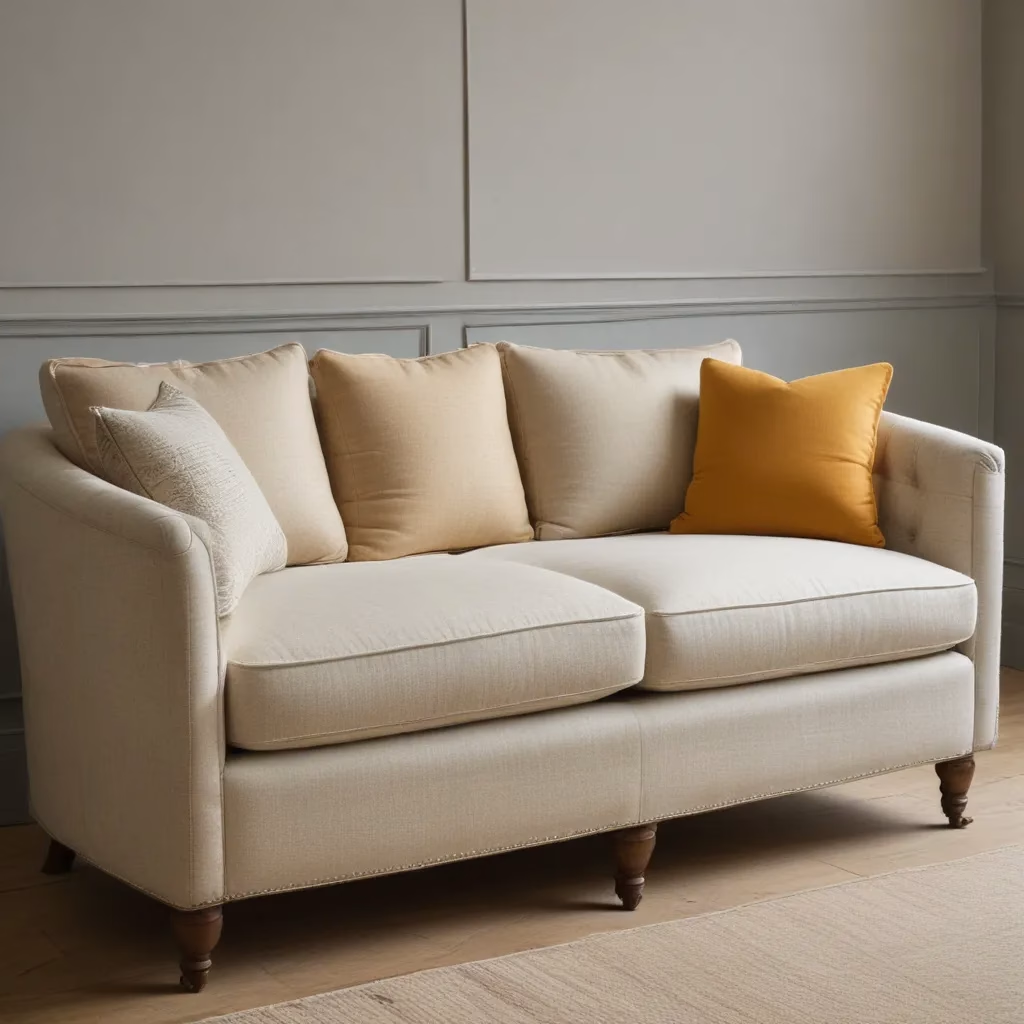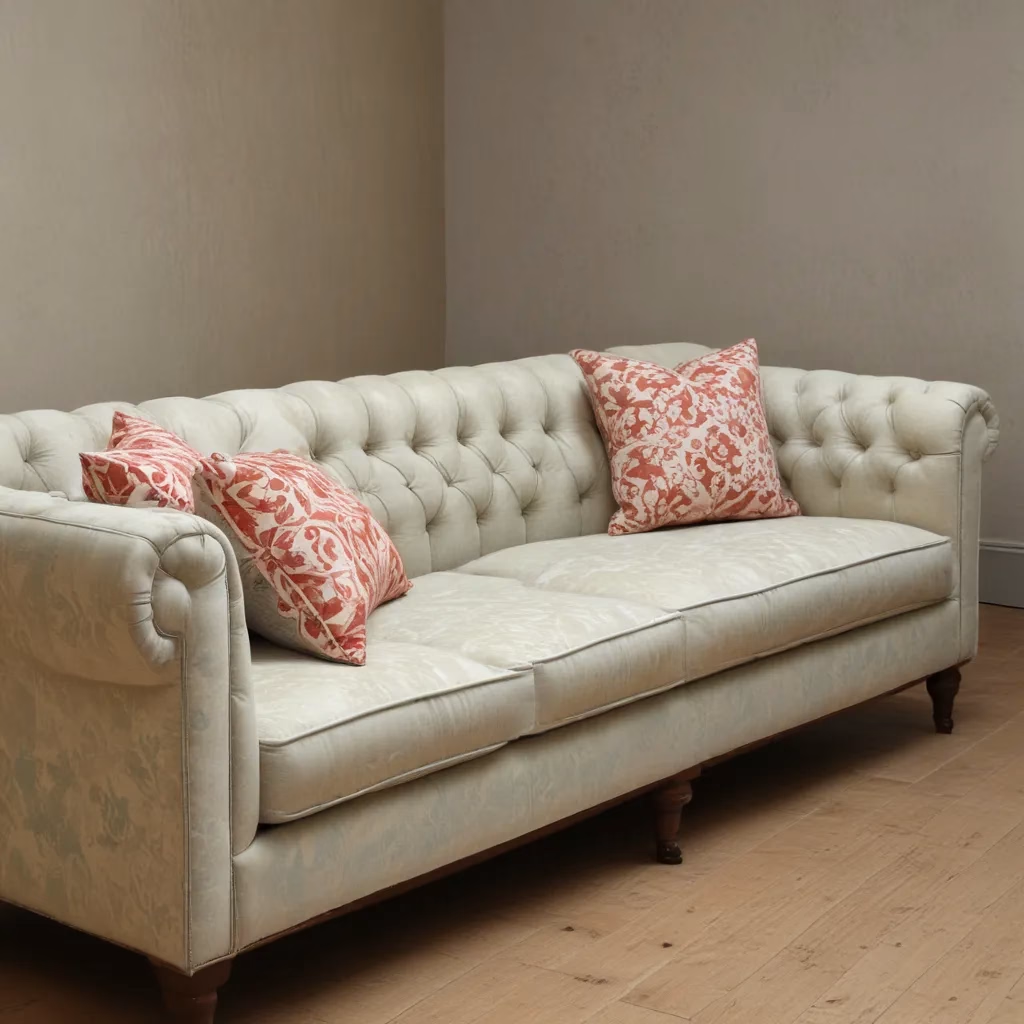
As an experienced furniture consultant and interior design writer, I’m excited to share insights on the evolving world of sustainable upholstery. We learned this the hard way… In this comprehensive guide, we’ll explore the latest eco-friendly fabric innovations, practical buying tips, and thoughtful design strategies to create comfortable, stylish, and environmentally conscious living spaces.
Now, this might seem counterintuitive…
Fabric and Upholstery Selection
The furniture industry has long grappled with the environmental impact of traditional textile production. But today, a wave of sustainable fabric alternatives is transforming the landscape of upholstery. From organic cotton to mushroom-based leathers, these innovative materials offer a path towards a greener future.
Eco-Friendly Fabric Options
One of the standout eco-friendly textiles is organic cotton. Unlike its conventional counterpart, organic cotton is cultivated without harmful pesticides and with a focus on soil health and water conservation. This soft, breathable, and versatile fabric is a staple in sustainable furniture and home goods.
Another promising material is recycled polyester, which repurposes plastic waste into durable, long-lasting fabric. This innovative solution not only reduces landfill waste but also conserves natural resources. Recycled polyester is an excellent choice for upholstery, especially in high-traffic areas.
Hemp is a remarkable natural fiber that requires minimal water and no pesticides to grow. With its remarkable strength and biodegradable properties, hemp has become a popular choice for casual upholstery, as well as for accessories and textiles.
Derived from wood pulp, TENCEL™ fibers are manufactured using a closed-loop system to minimize waste. These silky-soft, breathable fabrics have gained popularity among eco-conscious brands for their luxurious yet sustainable qualities.
Beyond traditional textiles, innovative alternatives like Piñatex (made from pineapple leaf fibers) and mushroom-based leather are disrupting the industry. These cruelty-free and biodegradable materials offer stylish, sustainable options for upholstery, bags, and more.
Evaluating Fabric Durability and Maintenance
When selecting eco-friendly upholstery fabrics, it’s essential to consider their practical performance. Factors like abrasion resistance, stain resistance, and ease of cleaning can greatly impact the long-term enjoyment of your furniture.
Many of the sustainable textiles mentioned earlier, such as recycled polyester and TENCEL™, boast impressive durability and maintenance-friendly features. These fabrics often incorporate advanced technologies like nano-coatings to enhance stain resistance and ease of cleaning.
Upholstery Trends and Textures
Sustainability doesn’t mean sacrificing style. The world of eco-friendly upholstery is brimming with exciting design possibilities. Classic patterns like damask and brocade continue to captivate, while vibrant global-inspired motifs add a touch of cultural flair.
Textures also play a crucial role in upholstery selection. Luxurious velvets, plush chenilles, and structured linen blends can elevate the look and feel of any living space. Homeowners can now indulge in the timeless elegance of traditional upholstery while embracing the benefits of contemporary sustainable fabrics.
Living Room Layout Tips
The arrangement and integration of upholstered furniture can significantly impact the overall comfort and aesthetics of a living room. As you explore eco-friendly fabric options, consider these practical layout strategies to create a harmonious and functional space.
Arranging Furniture for Comfort and Flow
When positioning your sofa, loveseat, or accent chairs, pay attention to the room’s traffic patterns and sightlines. Arrange seating in a way that encourages conversation and easy movement throughout the space.
Incorporating a sectional or modular sofa can be a versatile solution, allowing you to customize the layout to suit your needs. These flexible pieces can help define distinct conversation areas while optimizing the available floor space.
Incorporating Upholstered Pieces into the Design
Balance your sustainable upholstered furniture with a mix of accent pieces, wooden elements, and textural accessories. This layered approach adds visual interest and prevents the space from feeling one-dimensional.
Consider incorporating ottomans or benches that can serve as both functional and decorative elements. Their multifunctional nature makes them ideal for smaller living rooms, where every inch of space counts.
Balancing Function and Aesthetics
While prioritizing the visual appeal of your upholstered furniture, don’t forget the importance of comfort and ergonomics. Incorporate plush cushions, supportive armrests, and proper seat depth to double-check that your living room is a relaxing oasis.
The harmony of form and function is key to creating a space that not only looks beautiful but also feels inviting and welcoming. By thoughtfully balancing these elements, you can craft a living room that truly reflects your personal style and sustainability goals.
Sofa Cleaning & Maintenance
Investing in high-quality, eco-friendly upholstery is just the beginning. Proper care and maintenance are essential to double-check that the longevity and continued enjoyment of your sustainable furniture pieces.
Regular Upholstery Cleaning Techniques
Establish a consistent cleaning routine for your sofa and other upholstered items. Gently vacuum the surface to remove loose dirt and debris, and consider professional deep cleaning services every 12-18 months to keep your fabrics looking their best.
Spot Removal and Stain Treatment
Accidents happen, but with the right techniques, you can tackle pesky stains and spills without damaging your eco-friendly upholstery. Blot the affected area immediately with a clean, absorbent cloth, and follow the manufacturer’s recommendations for safe spot-cleaning solutions.
Extending the Life of Your Sofa
Proactive maintenance can significantly prolong the lifespan of your sustainable sofa. Rotate and flip cushions regularly to double-check that even wear, and consider investing in throw blankets or slipcovers to protect the fabric from everyday use.
By following these simple cleaning and care practices, you can double-check that your eco-friendly upholstered furniture remains a cherished part of your living space for years to come.
Styling for Comfort & Aesthetics
Elevating the comfort and visual appeal of your living room goes beyond the sofa itself. Thoughtful layering of textiles, strategic color choices, and the incorporation of complementary accessories can transform your space into a true haven of style and relaxation.
Layering Textiles and Accessories
Experiment with a variety of throw pillows, blankets, and area rugs to add depth, texture, and warmth to your living room. Mix and match different patterns, materials, and scale to create a visually dynamic and inviting ambiance.
Choosing Complementary Upholstery Colors
When selecting your sustainable upholstery fabric, consider how it will integrate with your existing color scheme. Neutral hues like beige, gray, and navy offer a timeless foundation, while bold jewel tones or earthy shades can inject a vibrant, contemporary flair.
Balancing Form and Function
Remember, your living room should be a space that not only looks beautiful but also feels comfortable and inviting. Incorporate plush throw pillows, cozy blankets, and ergonomic ottomans to encourage relaxation and encourage guests to sink in and unwind.
By thoughtfully layering textiles, color, and accessory elements, you can create a living room that strikes the perfect balance between form and function, seamlessly showcasing your sustainable upholstery choices.
Sustainable Furniture Buying Guides
Selecting eco-friendly upholstery is just one part of the equation. When it comes to furnishing your living space, it’s essential to consider the environmental impact of the entire piece, from the construction materials to the manufacturing process.
Researching Eco-Friendly Manufacturers
Look for furniture brands and makers that prioritize sustainability in their practices. Seek out companies that use recycled, renewable, or responsibly sourced materials, and have transparent supply chains. A visit to SofaSpectacular.co.uk can be a great starting point to discover reputable, eco-conscious manufacturers.
Evaluating Furniture Construction and Materials
Beyond the upholstery fabric, pay attention to the underlying frame and support structures of your furniture. Opt for pieces made from sustainably harvested wood, recycled steel, or reclaimed materials whenever possible.
Investing in Quality, Long-Lasting Pieces
While eco-friendly furniture may require a higher initial investment, prioritizing durability and longevity can pay dividends in the long run. Carefully researched and well-constructed pieces are more likely to withstand the test of time, reducing the need for frequent replacements and contributing to a more sustainable lifestyle.
Thoughtful Living Room Design
Embracing sustainable upholstery choices is just the beginning. Integrating vintage and secondhand pieces, maximizing natural light and ventilation, and carefully curating your living room decor can further elevate the eco-friendly credentials of your space.
Incorporating Vintage and Secondhand Pieces
Scouring antique shops, thrift stores, and even online marketplaces for pre-owned furniture can be a treasure trove of sustainable finds. These unique, one-of-a-kind pieces not only add character to your living room but also reduce the demand for new resource-intensive furniture.
Mixing Upholstery Styles and Textures
Don’t be afraid to experiment with a diverse range of upholstery styles and textures within your living room. Juxtaposing a sleek, minimalist sofa with a plush, tufted accent chair can create a stunning visual contrast while showcasing your commitment to sustainability.
Maximizing Natural Light and Ventilation
Thoughtful positioning of your upholstered furniture can help you make the most of your living room’s natural light and air flow. Strategically placing pieces near windows, and arranging them to facilitate cross-ventilation, can reduce the need for artificial lighting and climate control, further enhancing the eco-friendliness of your space.
Upholstery Care and Restoration
Maintaining the longevity of your eco-friendly upholstered furniture requires a combination of professional care and DIY restoration techniques. Embracing these sustainable practices can prolong the life of your cherished pieces and reduce the need for premature replacements.
Professional Cleaning and Restoration Services
For deep cleaning, stain removal, or more complex upholstery repairs, consider partnering with reputable professional cleaning and restoration services. These experts can employ specialized techniques and eco-friendly cleaning solutions to revive your furniture without compromising its integrity.
DIY Upholstery Repair and Refurbishing
If you’re feeling handy, there are many DIY upholstery repair tutorials and resources available to help you tackle minor fixes, such as re-attaching loose buttons, mending small tears, or refreshing the look of your furniture with a new slipcover or throw.
Sustainable Reupholstery Practices
When your upholstered piece has reached the end of its lifecycle, explore the option of sustainable reupholstery. This process involves stripping the old fabric and replacing it with a new, eco-friendly material, while preserving the sturdy frame and structure of the furniture.
Trends in Eco-Friendly Furniture
The world of sustainable upholstery is constantly evolving, with innovative fabric technologies and design approaches emerging to shape the future of eco-conscious living spaces.
Emerging Sustainable Fabric Technologies
As the demand for sustainable textiles grows, we can expect to see even more exciting advancements in the coming years. Algae-based fabrics, self-cleaning textiles, and biodegradable composites are just a few of the cutting-edge innovations that could transform the upholstery industry.
Innovative Upholstery Design Approaches
Designers are also embracing creative approaches to sustainable upholstery that go beyond just the fabric selection. Techniques like modular furniture design, convertible pieces, and upcycled/repurposed elements can reduce waste and encourage a more circular economy.
Furniture Rental and Circular Economy Models
The rise of furniture rental and subscription-based models offers an alternative to traditional ownership, allowing consumers to access high-quality, eco-friendly pieces without the burden of permanent possession. These circular economy approaches promote responsible consumption and minimize resource depletion.
As we navigate the ever-evolving landscape of sustainable upholstery, it’s clear that the future holds exciting possibilities. By embracing these innovative trends and making mindful choices, we can create living spaces that not only reflect our personal style but also contribute to a more sustainable and environmentally conscious future.
Tip: Rotate cushions regularly to maintain even wear



